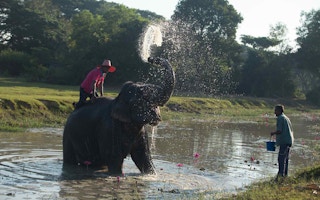Is it possible to create sustainable animal tourism that benefits both man and nature?
John Roberts, director of elephants at Anantara Golden Triangle Elephant Camp & Resort in Chiang Rai, Thailand, explains why you can’t necessarily have both and where the luxury travel market can make a difference.
How does one get to have a job title like “director of elephants?”
I was working in Chitwan National Park in Nepal doing conservation: wild tigers, rhinos and also learning a bit about captive elephants. In 2003, when Anantara bought this resort in Thailand, I started out as an elephant camp coordinator. Then, because I had to be director of something, I said director of elephants. I’m just a glorified mahout, really.
When you say “captive elephants” what exactly are the issues you’re dealing with?
As a species, wild elephants are facing problems like habitat loss and fragmentation of habitat. So even where there are some wild elephants, they can’t get to one another. We also have a population in captivity of about 3,500 elephants and I think the biggest threat to that population is unregulated tourism.
What constitutes a negative form of elephant tourism?
There’s one business model proliferating in which you have a 10-minute ride on the back of elephant. To make money, the camp has to keep your elephant working for 10 to 12 hours a day. It’s hard for the elephant and as a guest you learn nothing about elephants.
What is a better way of doing that?
A good, old-fashioned trekking camp may have clientele who sit on a saddle and go around for an hour. You pay a reasonable amount and then, in the best of these camps, the elephant gets the afternoon to go into the forest with its friends and have some elephant time.
Then, there is the traditional kind of camp that involves riding on the neck of an elephant, instead of on a saddle on its back, to be a mahout for a few hours. You get to make a bond with your elephant and mahout. Something about that whole scene is more rewarding and far more interactive.
Continue reading the rest of the interview here.










